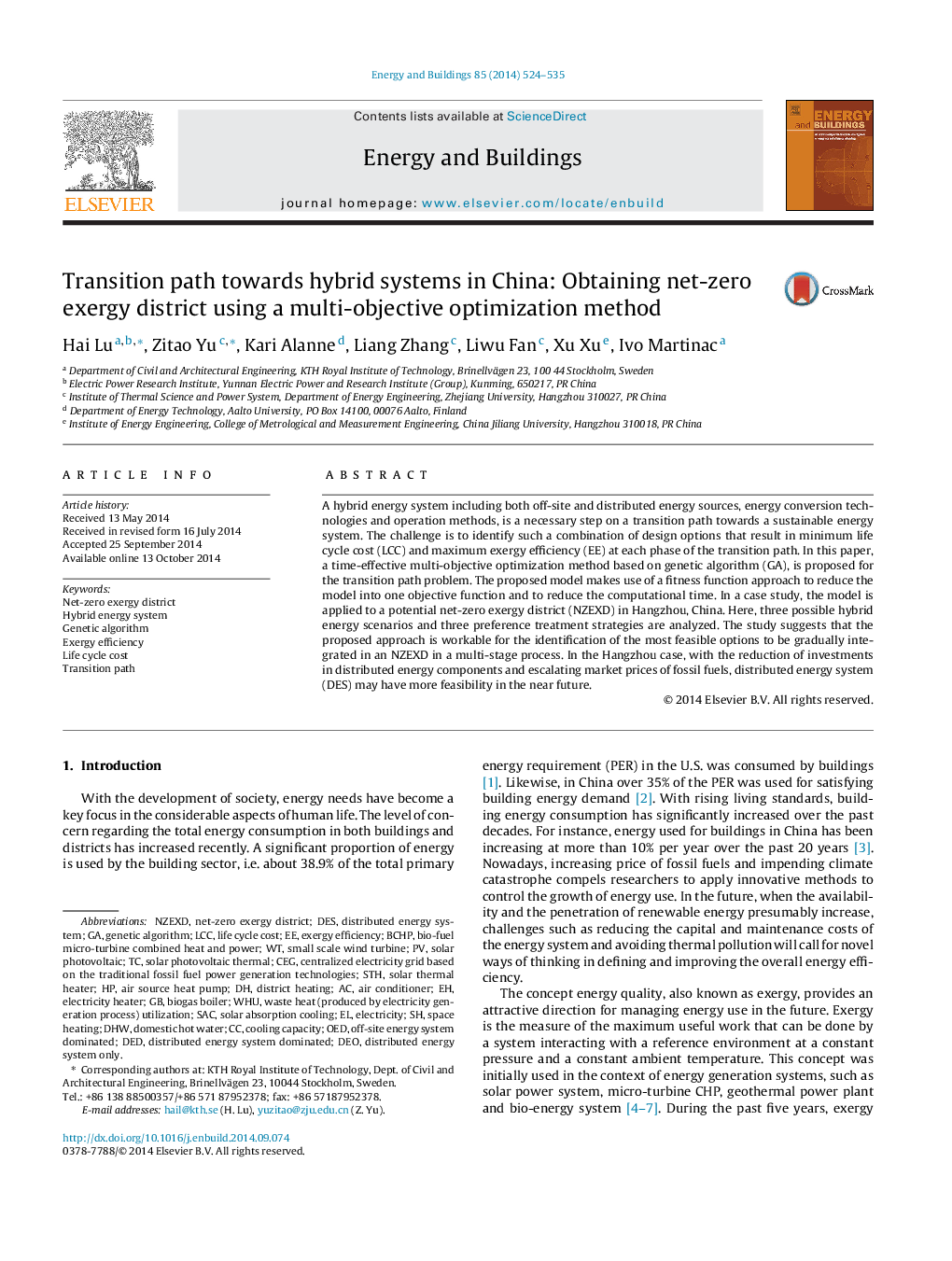| Article ID | Journal | Published Year | Pages | File Type |
|---|---|---|---|---|
| 6733186 | Energy and Buildings | 2014 | 12 Pages |
Abstract
A hybrid energy system including both off-site and distributed energy sources, energy conversion technologies and operation methods, is a necessary step on a transition path towards a sustainable energy system. The challenge is to identify such a combination of design options that result in minimum life cycle cost (LCC) and maximum exergy efficiency (EE) at each phase of the transition path. In this paper, a time-effective multi-objective optimization method based on genetic algorithm (GA), is proposed for the transition path problem. The proposed model makes use of a fitness function approach to reduce the model into one objective function and to reduce the computational time. In a case study, the model is applied to a potential net-zero exergy district (NZEXD) in Hangzhou, China. Here, three possible hybrid energy scenarios and three preference treatment strategies are analyzed. The study suggests that the proposed approach is workable for the identification of the most feasible options to be gradually integrated in an NZEXD in a multi-stage process. In the Hangzhou case, with the reduction of investments in distributed energy components and escalating market prices of fossil fuels, distributed energy system (DES) may have more feasibility in the near future.
Keywords
CegBCHPSmall scale wind turbineDEDLCCOEDSACSTHDomestic hot waterDHWDESElectricityGenetic algorithmDeoAir conditionerSolar absorption coolingExergy efficiencyHybrid energy systemDistributed energy systemcooling capacitySolar photovoltaicTransition pathLife cycle costair source heat pumpSpace heatingDistrict heating
Related Topics
Physical Sciences and Engineering
Energy
Renewable Energy, Sustainability and the Environment
Authors
Hai Lu, Zitao Yu, Kari Alanne, Liang Zhang, Liwu Fan, Xu Xu, Ivo Martinac,
